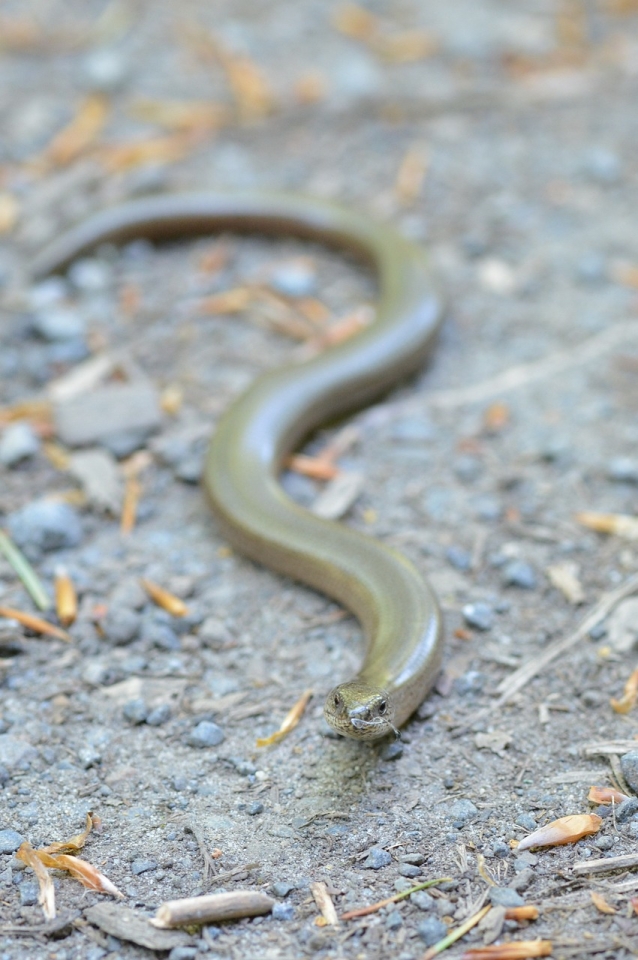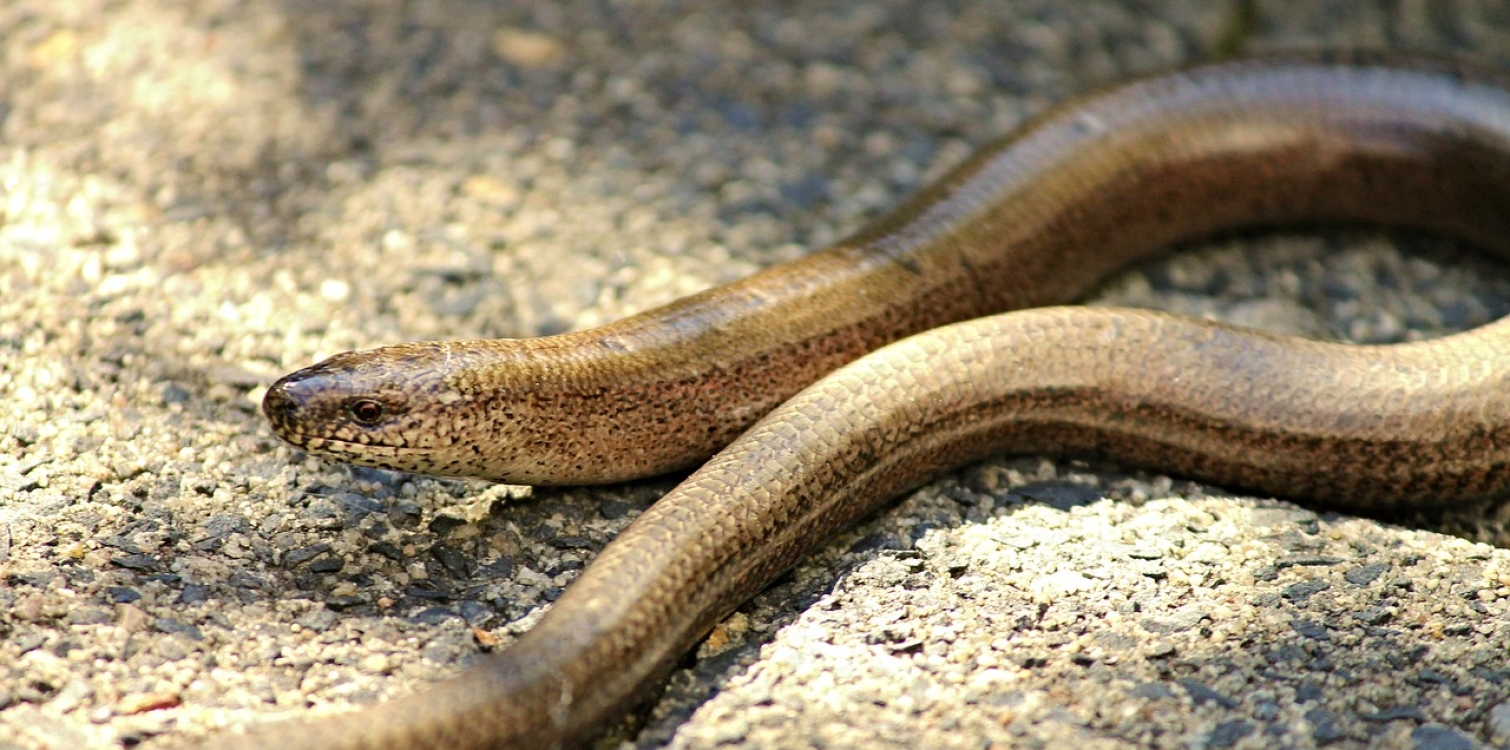The slow worm may look similar to a snake at first glance—but it is not a snake! It differs from other lizards by having stuned limbs and by hiding from direct sunlight. It prefers moist environments under fallen leaves and can be found in hedges, under stones, in meadows, and forests, often visiting gardens and compost piles.

Source: Pixabay
Slow worm (Anguis fragilis)
| Size |
|
| Weight |
|
| Diet |
|
| Habitat |
|
| Kingdom |
|
| Phylum |
|
| Class |
|
| Order |
|
| Family |
|
| Genus |
|
| Species |
|
The slow worm prefers moist and overgrown areas. It can be found in thick grass and it often visits gardens. However, this lizard does not like to sunbathe in direct sunlight like other lizards.
The slow worm has a smooth and shiny body covered in scales. Its back can be gray, brown, or reddish. The female and juvenile have a brown stripe along their back. Interestingly, when threatened, the slow worm can drop its tail. The tail continues to wiggle, distracting the predator.
The slow worm feeds on insects, spiders, earthworms, centipedes, and snails. Its preferred prey includes earthworms and naked snails. Its predators include wolves, foxes, birds, toads, and snakes.
The legless lizard hibernates in underground burrows, crevices, and similar places. When it awakens in spring, it begins to mate. Two to three months later, around June or July, it gives birth to 5 to 20 juveniles.
DO YOU KNOW?
- After a meal, the slow worm wipes off mucus by rubbing its head back and forth on the grass and moss.
Thank you.

